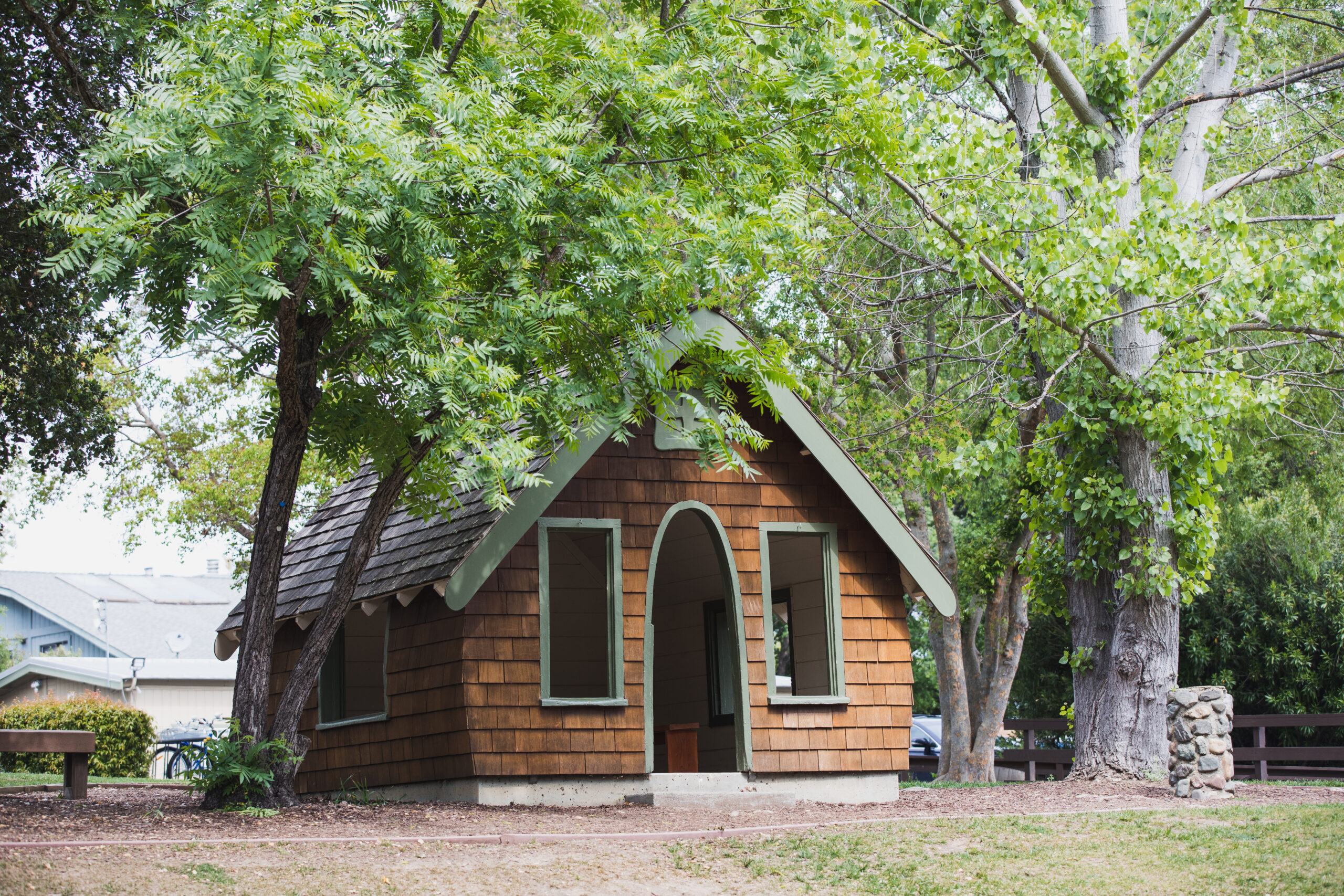At 7:45 am this past Wednesday morning, I was greeted in my office by five enthusiastic, thoughtful, and well-prepared young women. Joined by science teacher Christa Flores, these 6th graders had a proposal.
Emma started, “When life gives you lemons, make lemonade.” She then launched into an idea that had been hatched during our most recent Buddy Day.
The lemons? A rainy day that had caused us to cancel our initial activity. Instead of having students roam the campus with their buddies exploring the school’s history, classes had hunkered down in rooms, watching—or rewatching—the school’s 75th anniversary video, “As the Twig is Bent.”
The lemonade? An idea, first inspired by a 6th grade science class project, that was further nurtured and inspired by the movie. What was the idea? Build a new addition to the Village of Friendly Relations.
The idea had initially grown out of an engineering project completed in Ms. Flores’s 6th grade science class. Titled Tiny Green House Prototypes, the project challenged students in teams of 4 to design a scale model prototype of a house. The house had to be small (800 square feet in reality or less), utilize one form of renewable energy to light or heat the home, and they had to design a floor-plan that met the needs of a client (family of four, four college students, someone with a physical disability, or a single person who works from home).
One afternoon in the midst of the project, Lilah and Emilie were talking in carpool and Lilah mentioned that it would be exciting to see one of the Tiny House prototypes become an actual building in the Village of Friendly Relations. Emilie loved the idea and shared with the other girls on that fateful Buddies Day. The group then took the idea to Ms. Flores who encouraged them to put together a proposal and share with me.
The girls—Sam, Lora, Lilah, Emilie, and Emma—gave a 10-minute proposal on Wednesday that was well-organized, thoughtfully crafted, and inspiring. They have spent a great deal of time since that Buddy Day six weeks ago researching options, considering the challenges, and laying the foundation for a practical approach to an innovative idea. As I listened quietly and nodded my head, I was struck by how they had considered nearly every option and potential obstacle. I was impressed.
Reflecting on the meeting later in the day, I marveled at how these students are beautifully living the school’s core values. They are being curious, taking risks, and being their best. They are also finding a powerful way for today’s students to reconnect to our earliest roots.
I also realized that this project didn’t happen by chance. In reality, this project reflects an intentional effort as a school to do two things. First, it reflects our effort to nurture and celebrate risk taking. We tell students to take risks and then we model it every day on campus. These young women had the confidence to create and to share this proposal because they knew that as a school we valued the risk taking inherent in that process.
Second, it reflects our commitment to engineering and design thinking, something that emerged as a recommendation from last year’s Science Audit. Across the curriculum this year, our science teachers have embraced engineering projects: ramps and stone walls in JK-2nd; alarm circuits, optical engineering, and bubblemakers in 3rd-4th; an entire curriculum focused on problem solving and design thinking in 5th-6th; and prosthetic hands and projectiles in grades 7th-8th. As a school, we recognize the value in creating units that focus on real-world problem solving, that involve building and tinkering, and that apply important fundamental principles of science.
We also recognize that these projects inspire students to embrace science. We all know the stories of Silicon Valley engineers—a few of you, perhaps, are reading this article—who had their start tinkering and building in their backyard or garage. Our aim is to infuse that same spirit of hands-on building into our program.
On Wednesday, five 6th graders and their inspiring teacher gave me reason to believe that not only are we doing what we hoped to, we are doing it well. I invite you to attend the opening of the newest addition to the Village of Friendly Relations sometime between now and June 2015 when our five young engineers graduate. It’s going to be a wonderful celebration.
